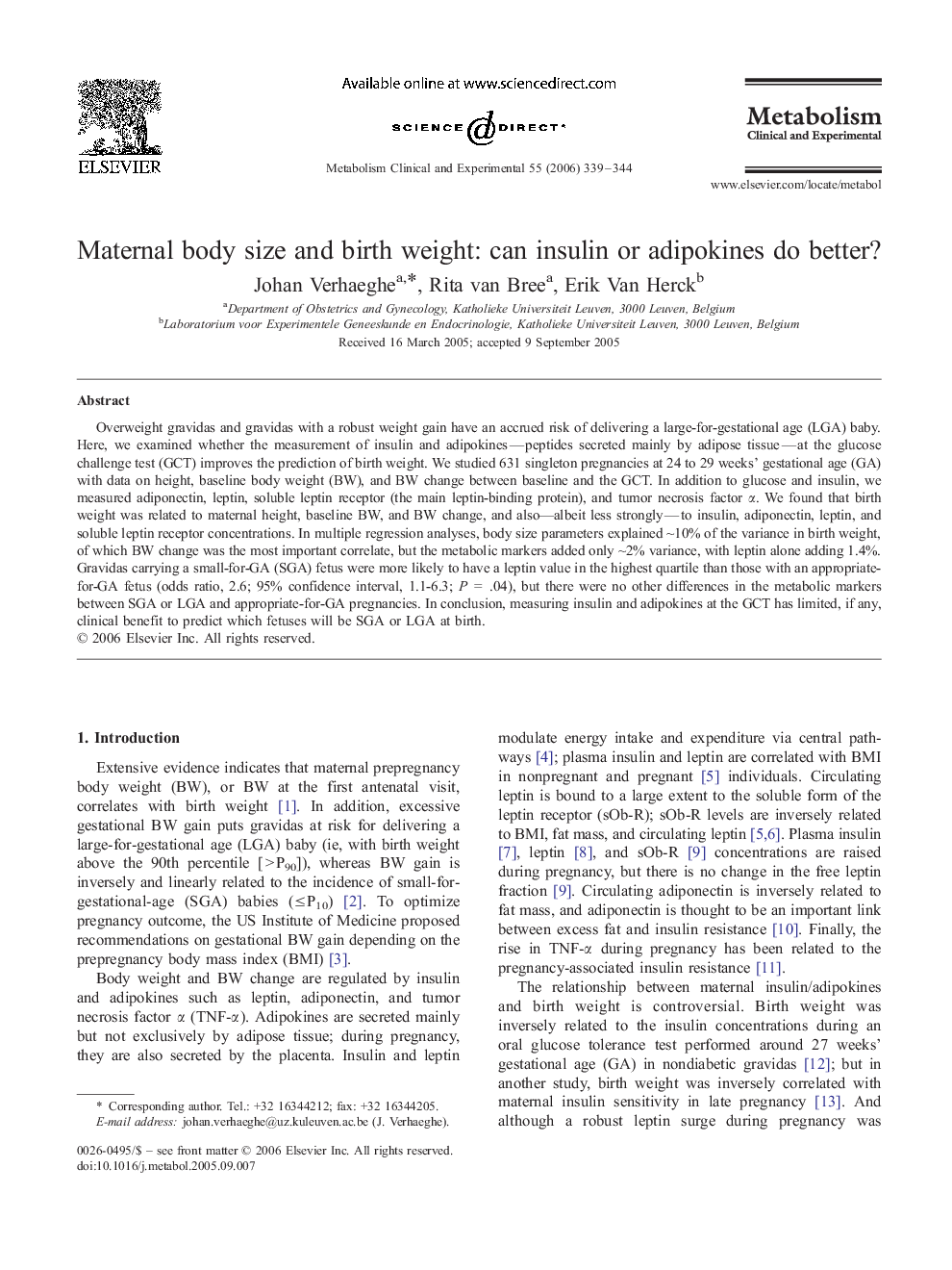| Article ID | Journal | Published Year | Pages | File Type |
|---|---|---|---|---|
| 2806747 | Metabolism | 2006 | 6 Pages |
Abstract
Overweight gravidas and gravidas with a robust weight gain have an accrued risk of delivering a large-for-gestational age (LGA) baby. Here, we examined whether the measurement of insulin and adipokines-peptides secreted mainly by adipose tissue-at the glucose challenge test (GCT) improves the prediction of birth weight. We studied 631 singleton pregnancies at 24 to 29 weeks' gestational age (GA) with data on height, baseline body weight (BW), and BW change between baseline and the GCT. In addition to glucose and insulin, we measured adiponectin, leptin, soluble leptin receptor (the main leptin-binding protein), and tumor necrosis factor α. We found that birth weight was related to maternal height, baseline BW, and BW change, and also-albeit less strongly-to insulin, adiponectin, leptin, and soluble leptin receptor concentrations. In multiple regression analyses, body size parameters explained â¼10% of the variance in birth weight, of which BW change was the most important correlate, but the metabolic markers added only â¼2% variance, with leptin alone adding 1.4%. Gravidas carrying a small-for-GA (SGA) fetus were more likely to have a leptin value in the highest quartile than those with an appropriate-for-GA fetus (odds ratio, 2.6; 95% confidence interval, 1.1-6.3; P = .04), but there were no other differences in the metabolic markers between SGA or LGA and appropriate-for-GA pregnancies. In conclusion, measuring insulin and adipokines at the GCT has limited, if any, clinical benefit to predict which fetuses will be SGA or LGA at birth.
Related Topics
Life Sciences
Biochemistry, Genetics and Molecular Biology
Endocrinology
Authors
Johan Verhaeghe, Rita van Bree, Erik Van Herck,
